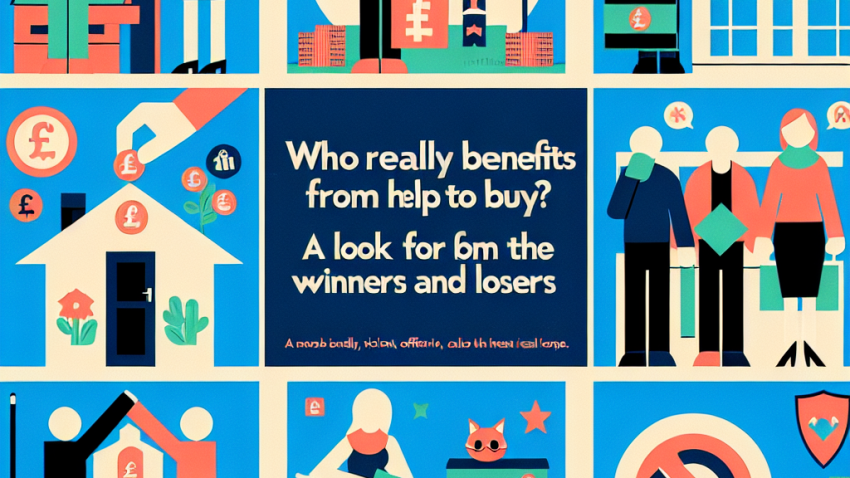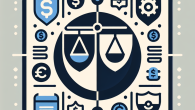
Who Really Benefits from Help to Buy? A Look at the Winners and Losers
How Financial Regulations Protect Everyday Consumers (And Why You Should Care)
Let’s face it—financial regulations don’t exactly make for riveting dinner party conversation. But as someone who’s spent her career staring down shady fine print and fiscal injustice, let me assure you: these rules matter. I’m Eleanor “Ellie” Cartwright—financial watchdog, tea enthusiast, and unapologetic champion of everyday people navigating a world where money talks… and sometimes lies.
Financial regulations aren’t just bureaucratic red tape. They can stop predatory lenders from draining your bank account, ensure your savings are safe during a banking crisis, and even give you rights when a credit bureau messes up your report. In this article, we’ll break down how financial regulations exist to protect you, how they work, and what’s at stake when those rules are ignored.
What Are Financial Regulations, Really?
Financial regulations are laws, guidelines, and oversight frameworks created to keep financial institutions honest, transparent, and fair. Think of them as the guardrails on a winding road: you might think you don’t need them… until you’re halfway off the cliff.
They’re implemented by both government and independent bodies, with agencies like the U.S. Securities and Exchange Commission (SEC), the Federal Reserve, and the Consumer Financial Protection Bureau (CFPB) leading the charge in the United States.
Key Objectives of Financial Regulation
- Consumer Protection: Prevent fraud, discrimination, and abuse in lending, investing, and banking.
- Market Integrity: Ensure fair access and pricing in financial markets.
- Financial Stability: Avoid catastrophic breakdowns like the 2008 financial crisis.
- Transparency and Disclosure: Require companies to be upfront about terms, risks, and fees.
Without these? Chaos. Because let’s face it—the financial industry, left unattended, doesn’t exactly have a stellar track record when it comes to playing nice with consumers.
Consumer Protections That Changed the Game
Too often, consumers aren’t aware of just how much the rules have shifted in their favor over time. So let’s spotlight a few victories that hit close to home.
The CFPB and Your Rights
The Consumer Financial Protection Bureau (CFPB), born out of the 2008 crisis, was created with one mission: to protect consumers like you. Since then, they’ve forced predatory lenders to pay billions in restitution, revamped mortgage lending rules, and made credit reporting more transparent.
Truth in Lending Act (TILA)
Ever wonder why you receive those long, detailed pages of disclosures when you get a loan or credit card? You can thank TILA. This 1968 law requires lenders to explain terms such as APR, repayment schedules, and other potentially sneaky costs, so people aren’t blindsided later.
Fair Credit Reporting Act (FCRA)
Credit reports are terrifying enough—imagine if they were full of errors and you couldn’t fix them. FCRA ensures that consumers have the right to review, dispute, and correct inaccuracies in their credit reports.
The Dodd-Frank Act
After the financial industry imploded in 2008 (remember that delightful episode?), the Dodd-Frank Wall Street Reform and Consumer Protection Act came in swinging. Along with creating the CFPB, it aimed to prevent another meltdown by increasing oversight of big banks, mortgage firms, and even hedge funds.
Regulations Help Prevent the Worst-Case Scenarios
Let me paint you a picture. Without strong regulations, banks could:
- Use your deposits to gamble on volatile investments—and lose it all.
- Deny mortgages based on racial or demographic profiling.
- Issue loans with interest rates so high it’s modern-day usury.
And that’s not alarmism. We’ve been there. We have the economic scars to prove it. Financial rules, while not flawless, are society’s promise to consumers that when it comes to your money, someone is watching the watchers.
The Cost of Regulatory Rollbacks
Over the years, some policymakers have called for “deregulation” in the name of reducing costs and promoting innovation. Sounds nice—until you realize what’s being sacrificed.
Real-World Consequences
- Bank Failures: Relaxed oversight contributed to the collapse of institutions like Silicon Valley Bank. Less regulation = more risk-taking.
- Poor Lending Practices: Subprime mortgages were approved without verification, triggering the 2008 housing bubble—and collapse.
- Higher Consumer Fees: Institutions with fewer rules often pad their profits by squeezing customers with obscure fees and penalties.
Regulations are not just bureaucratic hurdles. They can be difference between financial ruin and resilience.
How You Can Advocate for Stronger Financial Regulations
Okay, so you’re not a lawmaker or a lobbyist. You’re just trying to avoid overdraft fees and maybe save enough to retire before 85. But you still have power. Here’s how to use it.
Ways to Take Action
- File Complaints: If you’re mistreated by a lender, report it to the CFPB’s complaint system. They follow up often.
- Support Consumer Advocacy Groups: Organizations like the National Consumer Law Center work to strengthen protections.
- Vote with Financial Policies in Mind: Financial regulation can be a political football, so know where your candidates stand.
Why You Should Care (Even If You Think It Doesn’t Affect You)
Here’s the truth: whether you’re maxing out coupons at the grocery store or investing in your first 401(k), regulations affect your wallet. They shape what you pay in fees, what you earn in interest, and whether you’re treated fairly by a lender.
And if we forget that? Then we open the door for history to repeat itself. Because financial institutions have an uncanny ability to “forget” their past mistakes—unless they’re forced not to.
Final Thoughts from Ellie
Nothing sexy about financial regulation, right? Wrong. As someone who’s seen the underbelly of unchecked financial power, I’ll tell you: these laws are what stand between working families and systemic exploitation.
So next time someone says, “Too much regulation is bad for business,” ask them: bad for which business? Because if “business” comes at the expense of basic human fairness and financial safety for millions, maybe it’s worth slowing down and reading the fine print.
Until then, I’ll be here—spilling tea, calling out corporate nonsense, and fighting the good fight. Preferably in that order.
Want to reach out or share your consumer horror story? Visit our Contact Page or learn more About Us.









Leave a Reply